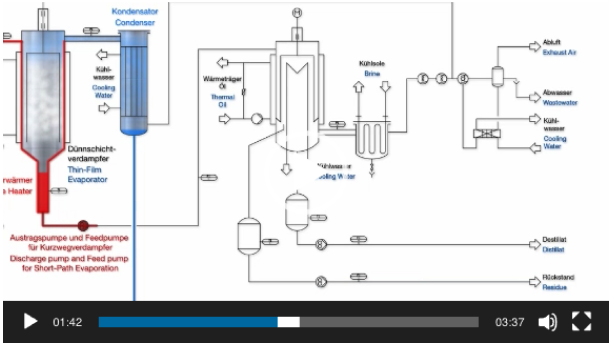Rectification
Home
- / GIG Karasek Portfolio Overview
- / Rectification
For highest fabric clearances of liquids
Rectification is a thermal separation process in which the more volatile components of a mixture are recovered and concentrated



The supply of thermal energy vaporizes the more volatile components and the ascending vapor phase comes into contact with descending liquid (reflux of volatile components). Part of the condensate is discharged as top product.
The reflux contact normally occurs in trays or packages installed in a column. Increasing the number of rectification steps raises the concentration of the most volatile component. This means that the concentration of the low-volatile component is increased by forwarding of the top product of the first rectification column into a second column.
Rectification is commonly used to purify alcohols, but usually soil streams are used to preheat the cold stream and optimize overall energy requirements. By combining with other technologies than mechanical vapor recompression, there are a variety of other application fields.
Retification
Overview
Application
- Alcohol / water
- Solvent / water
- Solvents / fatty acids
- Trichlorethylene / oil
- Solvent / water from spinning bath for fiber industry
- Alternative fuels
- Methanol separation from condensate of the evaporation plant
- Methanol / water
- Ethanol / water
- Acetone / water
- Butyl acetate / water
- Butyl alcohol / water
- Glycerin / water
- Lactic acid / waterand much more.
Advantages
- continuous operation
- energetically more favorable than a distillation
- space-saving
- technically less expensive
Energy optimization options
- Multi-level systems
- Mechanical vapor recompression
- Thermal vapor recompression
Column internals
- packs
- soils
- packing
Reboiler
- falling film evaporator
- thin-film evaporator
- forced circulation

The product is distributed continuously over the entire circumference of the heating wall. Using special wiper elements the wall contact is renewed constantly and the product stream simultaneously transported. The blades do not touch the heating jacket, but prevented crusting or clogging of the heating surface by massively built, arranged with defined gap wiper elements.



